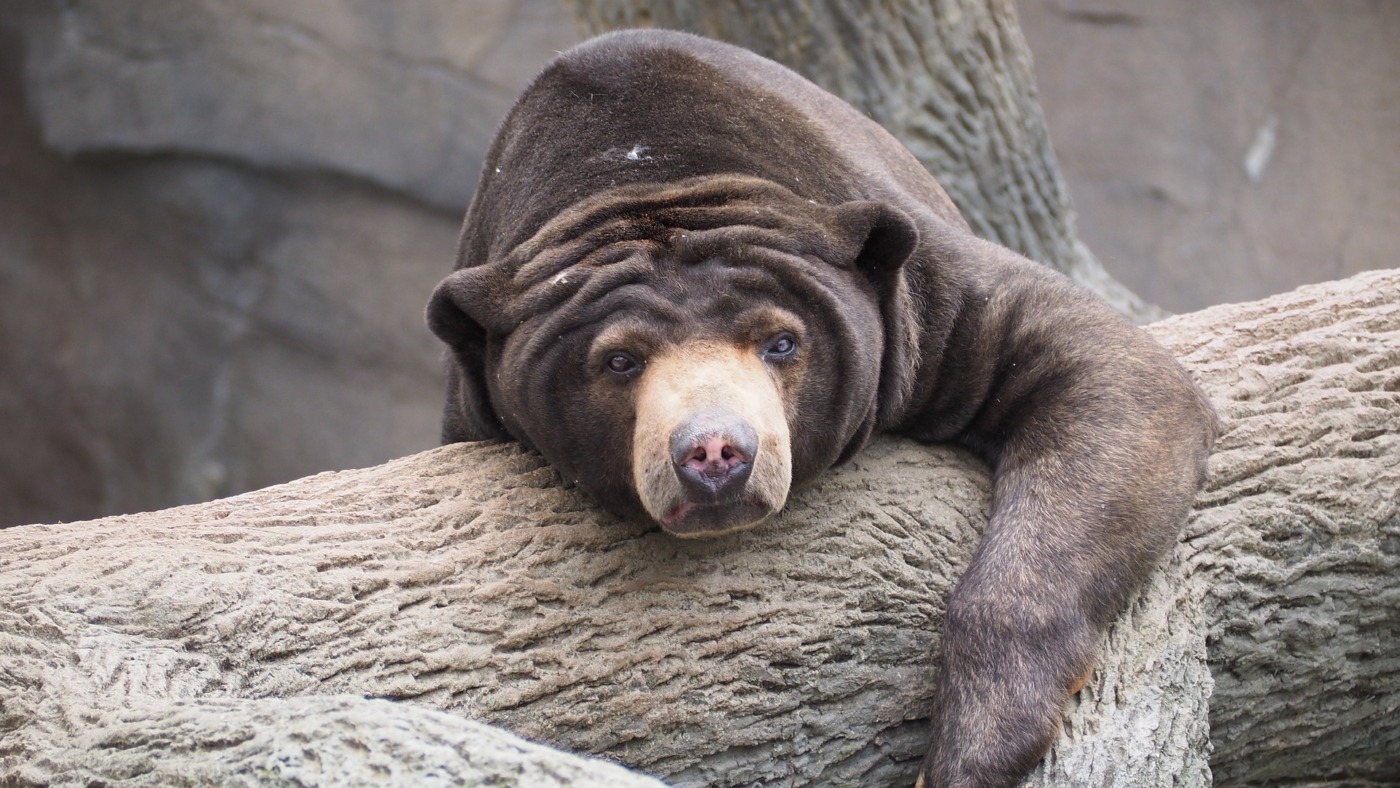Facial Mimicry in Sun Bears – a bare necessity after all?
Are Sun Bears smarter than your average bear? Research from the University of Portsmouth certainly suggests so. The two-year study examining the social lives of the world’s smallest bear species found that they have the ability to mimic each other’s facial expressions in shows of social solidarity and bonding. This ability shows complex social skills and is a behaviour considered so complex that until now, scientists thought it was only possible by humans and a couple of other mammal species such as gorillas and dogs.
The study suggests that a behaviour that we previously thought singled out humans as superior to other animals in terms of social intelligence may not be as unique to us as we once thought, and there is potential that more mammalian species than we thought may also possess this ability.
The two-year study examining the social lives of the world’s smallest bear species found that they have the ability to mimic each other’s facial expressions in shows of social solidarity and bonding
It was previously thought that this behaviour would only be useful in the large hierarchical groups formed by eusocial animals like humans and apes. However, sun bears do not display this form of social behaviour, opting instead for a more solitary lifestyle in their habitat, the rainforests of southeast Asia. This therefore raises exciting questions about the purpose of the behaviour.
The research stems from an observation made by comparative psychologist Marina Davila-Ross at a sun bear conservation centre in in Borneo whilst she was studying orangutans. Davila-Ross was intrigued when she noticed that whilst engaging in social play sessions, the bears seemed to occasionally mimic each other’s facial expressions. To further investigate this observation, 22 captive sun bears were analysed on video during around 370 distinct bouts of social play, and facial expressions were analysed along with their timings.
The research stems from an observation made by comparative psychologist Marina Davila-Ross at a sun bear conservation centre in in Borneo whilst she was studying orangutans
Two main facial expressions were documented. One involving a display of the bears’ upper incisors, and another that did not involve this. Conclusively, the researchers remarked that the mimicry was subtle, but definite, with bears copying an open-mouthed facial expression with a high degree of accuracy within a second of being presented with one.
Speculatively, the study suggested that the purpose of this facial mimicry was to indicate to other bears during play that an individual is prepared to engage in rougher play, and therefore sun bears use facial mimicry to regulate play intensity.
Conclusively, the researchers remarked that the mimicry was subtle, but definite, with bears copying an open-mouthed facial expression with a high degree of accuracy within a second of being presented with one
The researchers seem to believe that sun bears are not an isolated case, and this form of social mimicry is a lot more widespread amongst animals than we currently believe. This is highlighted by the concluding remark of the study, published in the journal Nature Scientific Reports: “we encourage researchers to test for the presence of this trait in a wide range of mammalian taxa”.
Little is known about facial mimicry in the animal kingdom, and this study, whilst revealing, does highlight our lack of knowledge. For example, in dogs, facial mimicry is known to affect the length of play sessions. However, the research showed that this is not the case for sun bears. Further research is needed to understand the nuance of this behaviour not only in sun bears, but across all species that exhibit this behaviour.
This is highlighted by the concluding remark of the study, published in the journal NatureScientific Reports: “we encourage researchers to test for the presence of this trait in a wide range of mammalian taxa”
In terms of conservation, this new information may hold a lot of potential. Davila-Ross is hoping to undertake future research into whether the degree of facial mimicry varies depending on various factors such as bear’s familiarity with each other, and if it is affected by bear’s personalities. If researchers can understand more about how these factors relate to the mimicry behaviour, we may one day understand how differences in bears personalities affect their rehabilitation and eventual release into their natural habitats.
Some have cast doubts on the credibility of the research, however. An ecologist from the University of Pisa, Elisabetta Palagi, highlighted that it is important to consider that the study took place in captivity, amongst bears that are forced to be more social than their wild counterparts. Palagi, whilst positive about the study, drew comparisons to orangutans, which are known to show significantly more social behaviour in captivity than in the wild. More investigation is clearly needed to determine whether this is exclusively a trait of captive sun bears.
But whether this behavioural facet results from captivity or not, perhaps in future we should be more careful when assessing the sociability of animal species.

Comments